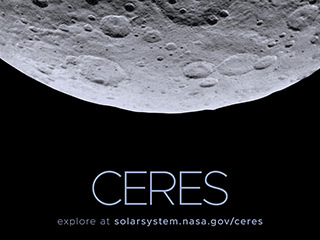Winners
Naren Krishnan
Grade 5-6

Contest:
2016-2017
Topic:
Titan's Lakes
School:
Medea Creek Middle School, Oak Park, CA
Teacher:
Michael O'Hagan
"The lakes on Titan, Saturn's biggest moon, are an oddity worth researching. Titan is the only alien planetary body in the solar system that has them! Unlike Earth where the lakes are made of water, Titan's lakes are composed of hydrocarbons like methane and ethane. They also may include some other components we have not detected in their depths. Because of Titan's subzero temperatures, these hydrocarbons which are normally gases on Earth are liquid on Titan.
One surprising fact is that Ligeia Mare, one of Titan's largest lakes, is completely composed of methane. NASA should explore the reasons for this unique body of liquid. Scientists expected the composition to be pretty close to 50% methane and 50% ethane, but these predictions were not even close. The ethane may have been transported out in an underground river or evaporated. This will require more research and brainpower into evaluating Titan's lakes and unlocking their secrets.
Scientists should also explore Target 2 because the placement of these lakes is odd. The majority of the lakes are in the northern and southern polar regions. No one really why the lakes are only in the polar regions, but it could be because of temperature. Perhaps there were lakes closer to the equator of Titan which have evaporated due to a warmer temperature, leaving Titan with some intriguing polar lakes.
Scientists have not fully explored this theory, but it is another reason Target 2 is the best target to conduct further research. Scientists have found another strange thing about these lakes. Almost all of the lakes are found near the north pole. Researchers hypothesize that this may be due to Saturn's oblong orbit around the sun. Because of this, Titan is 12% closer to the sun in the southern summer than its northern summer. This means that summers in the northern hemisphere are long and moderate while in the southern hemisphere they are short and intense. This leads to an accumulation of methane in Titan's northern hemisphere and lots evaporated in the southern hemisphere. This process on Saturn's abnormal moon is very similar to Earth's Milankovitch cycles. These cycles cause long-term climate change and Earth's ice ages. This potential similarity to Earth could uncover an amazing new discovery about either Earth or Titan.
Titan's lakes should be our astronomical scientists' first priority because of their hydrocarbon compositions, their polar region concentration, and the effect of the oblong orbit on their formations. These peculiar lakes spark curiosity in many of our greatest minds. Titan's strange coincidences and abnormalities should promote more research so we can further understand this Earth-like moon of Saturn's."
